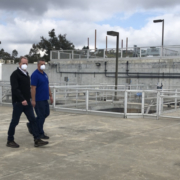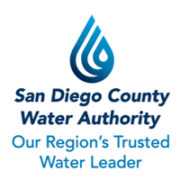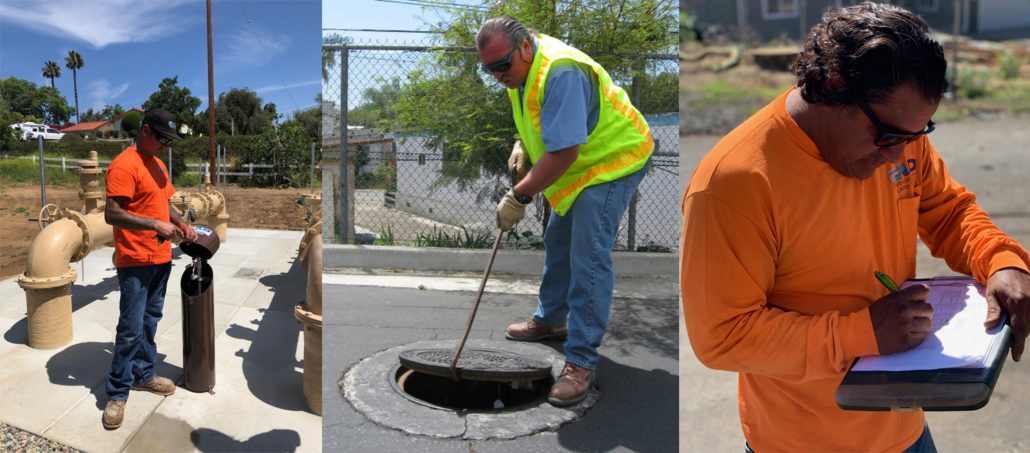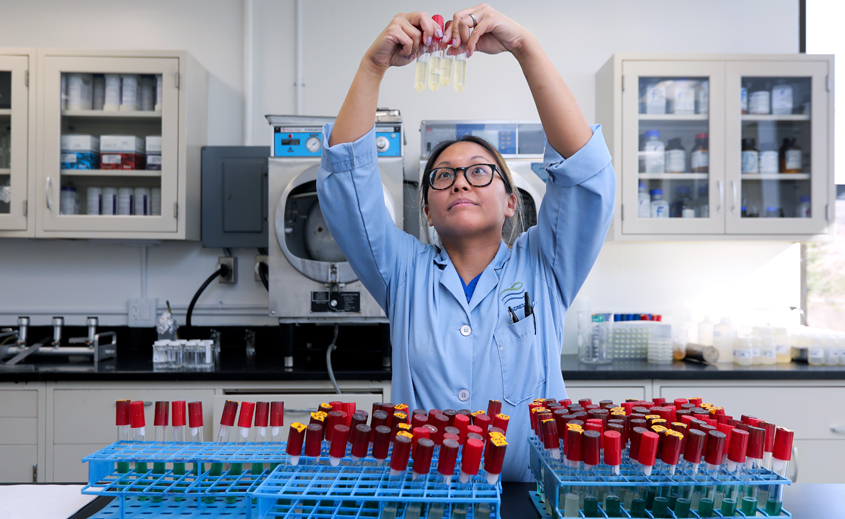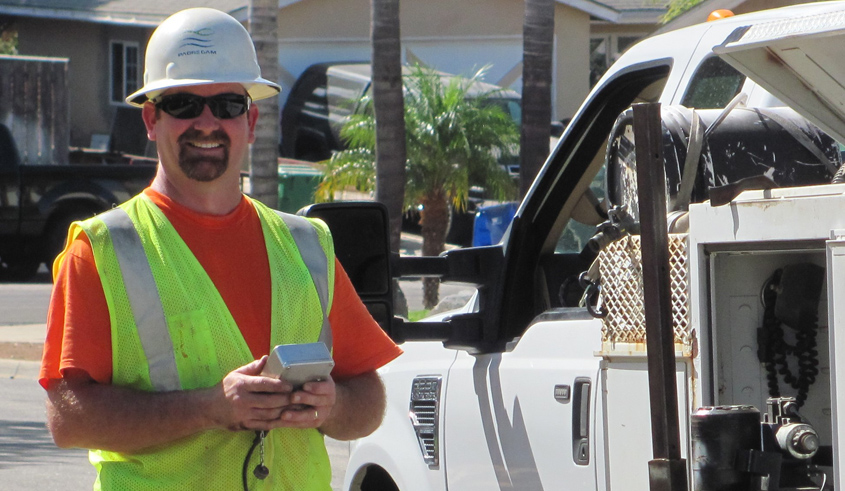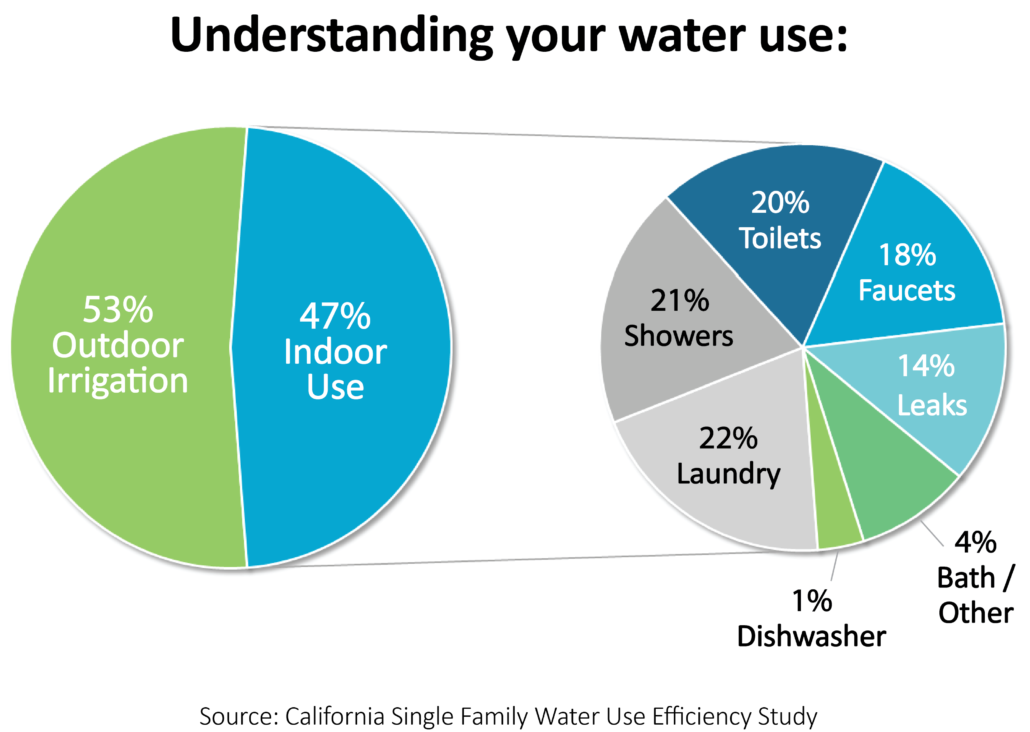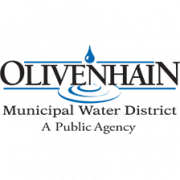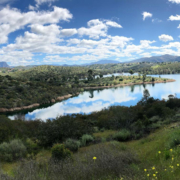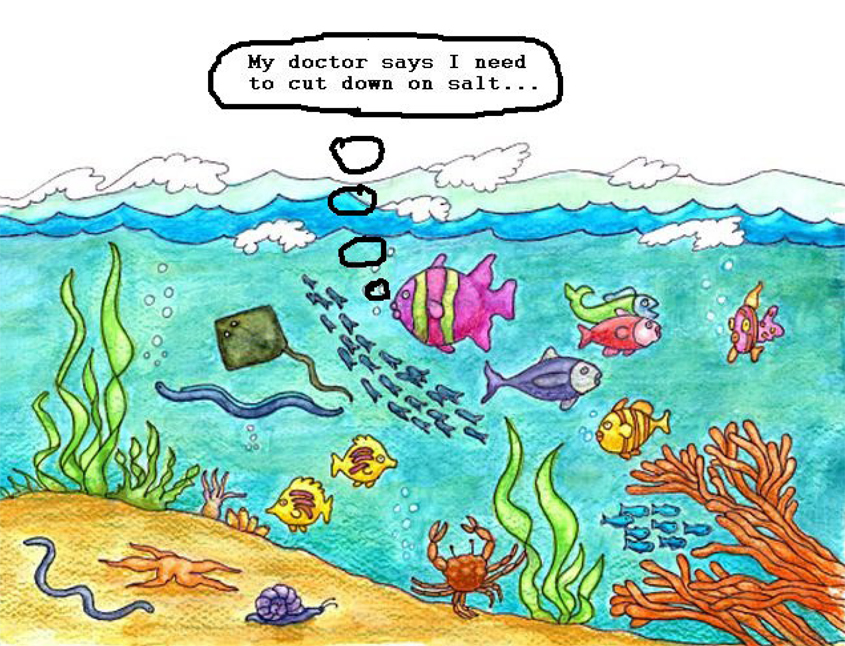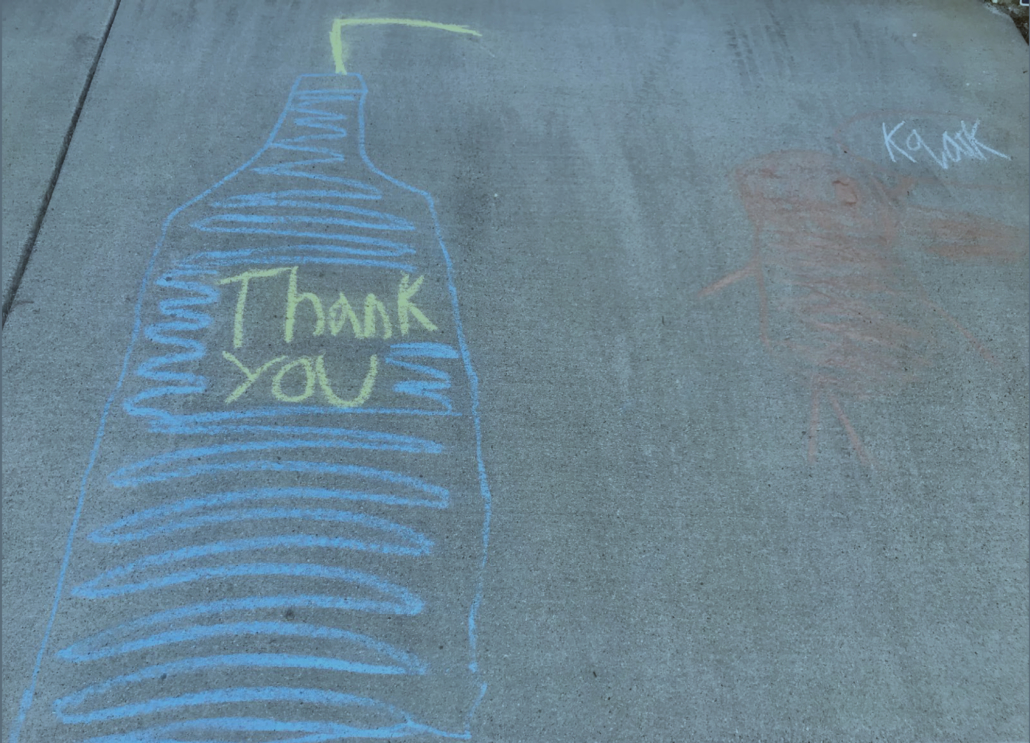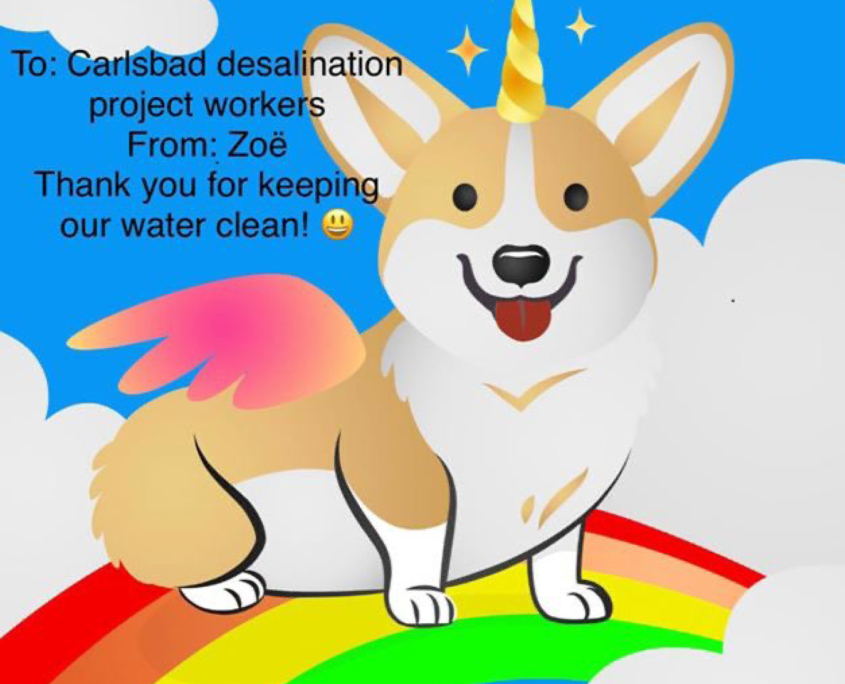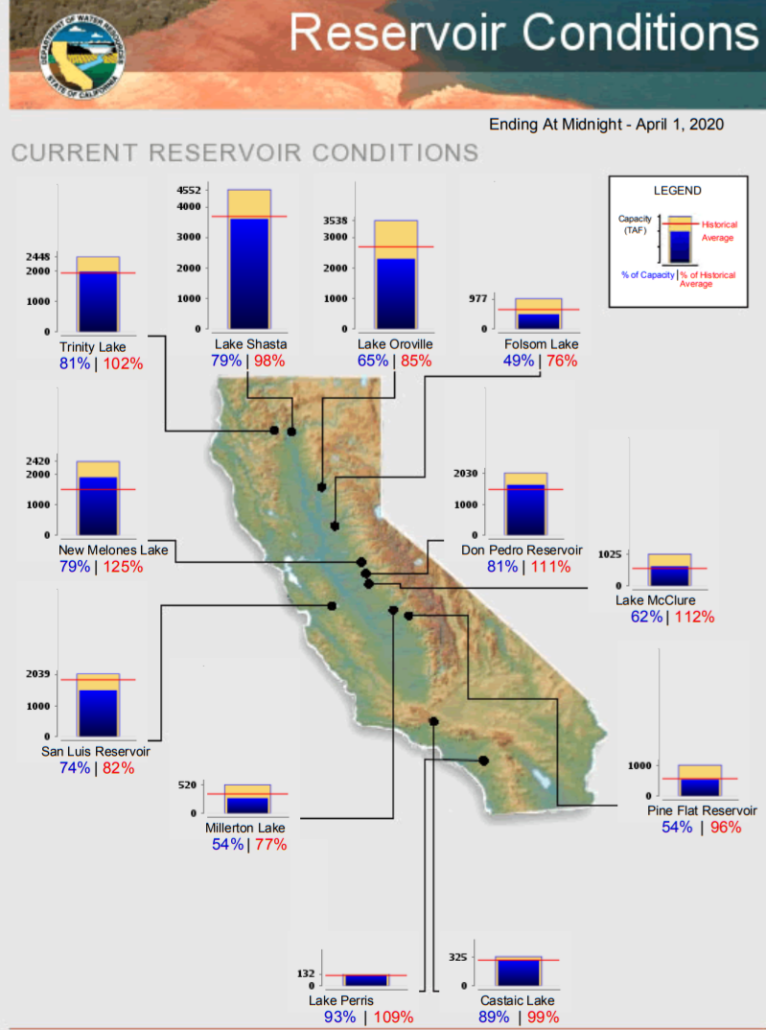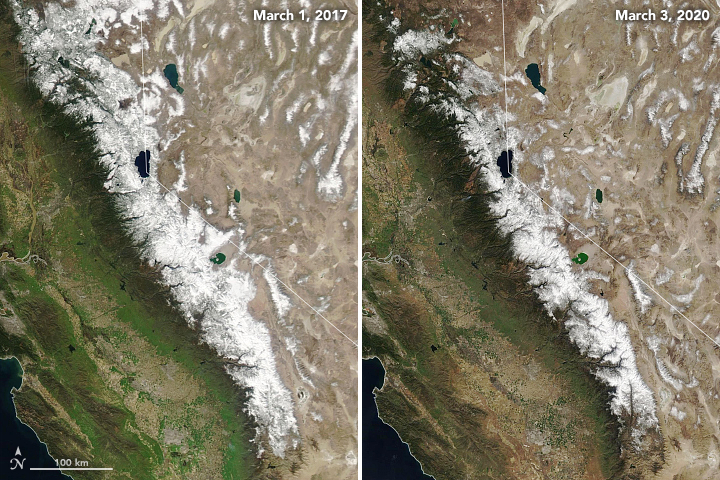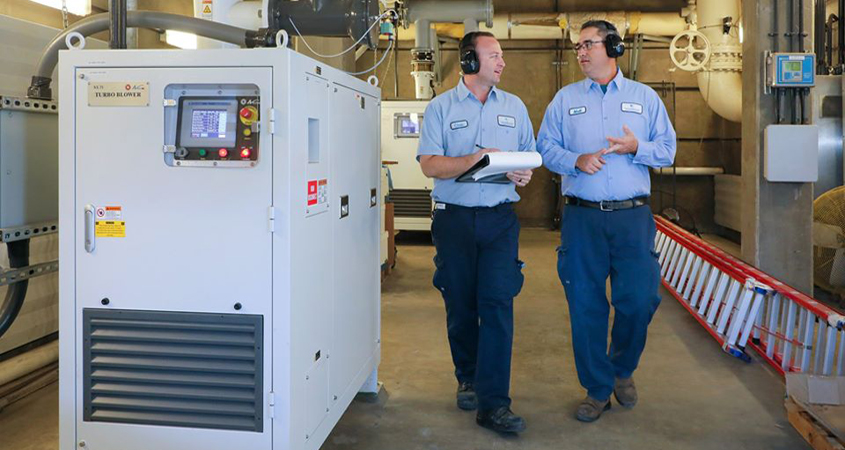San Diego Mayor Thanks Water Treatment Plant Employees
The City of San Diego’s public utilities team including water treatment plant employees continues to work to provide its customers with high-quality drinking water during the coronavirus pandemic.
Following efforts to increase safety measures throughout all City departments to stop the spread of COVID-19, San Diego Mayor Kevin Faulconer toured the Alvarado Water Treatment Plant on Friday to observe increased safety protocols. He also thanked City employees as they continue to deliver safe, reliable water to over 1.4 million San Diegans.
Increased safety measures ensure continued water supply safety
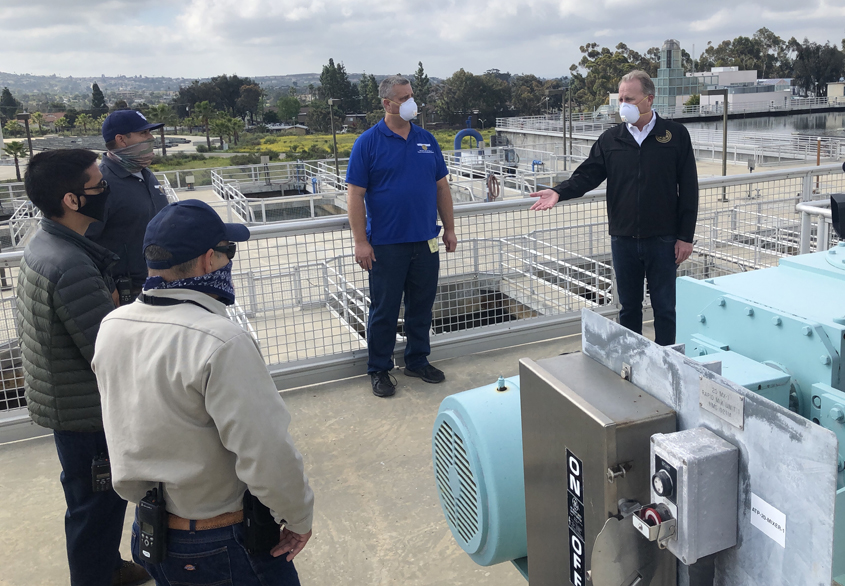
San Diego Mayor Kevin Faulconer meets with water treatment plant workers playing essential roles in delivering safe drinking water. Photo: City of San Diego
Mayor Faulconer kicked off his visit Friday morning by meeting maintenance staff on duty.
“Like many San Diegans, our City employees are adapting as we take on the COVID-19 crisis,” said Faulconer. “They’re working under increased safety measures so we can continue to deliver essential services, including a safe, clean and reliable water supply.
“I stopped by the Alvarado Water Treatment Plant today to thank the employees there and let them know how proud we are of all they’re doing to keep the water running for San Diegans.”
More than a month into the coronavirus crisis in California, water and wastewater treament employees, continue to work around the clock to deliver essential services to San Diego County residents.
“I am so grateful for the employees that come to work daily to make sure the City residents have access to a safe and reliable water supply,” said Shauna Lorance, City of San Diego public utilities director. “While you might not be able to go out to a restaurant, visit the beach or any of the usual activities all of us in San Diego have learned to enjoy, you do not have to worry about the safety of the water supply. The water continues to be treated and tested just like always.”
The San Diego County Water Authority and its 24 member agencies have increased regional coordination and communication to ensure the coronavirus pandemic does not impact safe and secure water service for San Diego County.
Treatment plants employ innovative disinfection and filtration

Pipes carrying water through the treatment process at the Alvarado Water Treatment Plant. Photo: City of San Diego
The City of San Diego has three water treatment plants that use several treatment methods to provide safe drinking water to the public. The plants are managed by the City’s Public Utilities Department.
San Diego’s drinking water treatment plants use a combination of innovative disinfection strategies and filtration. This multi-step process provides multiple barriers against elements that could make the city’s water unsafe or impact taste.
When the Alvarado Water Treatment Plant began operation in 1951, it replaced old water treatment plants at University Heights and Chollas Heights. Located near the Murray Reservoir, Alvarado today provides drinking water to customers in the central section of the City. Plant capacity is 200 million gallons of treated drinking water per day and is operated by 16 City employees.
A multi-phase expansion and upgrade project for the plant was completed in 2011. The Alvarado Plant began its first year of active participation in the American Water Works Association’s Partnership for Safe Water Program in 2013 and has implemented several optimizing projects.
Alvarado is also home to the City’s Water Quality Laboratory, which continuously monitors the City’s drinking water to make sure it is always safe and meets all state and federal health standards.

